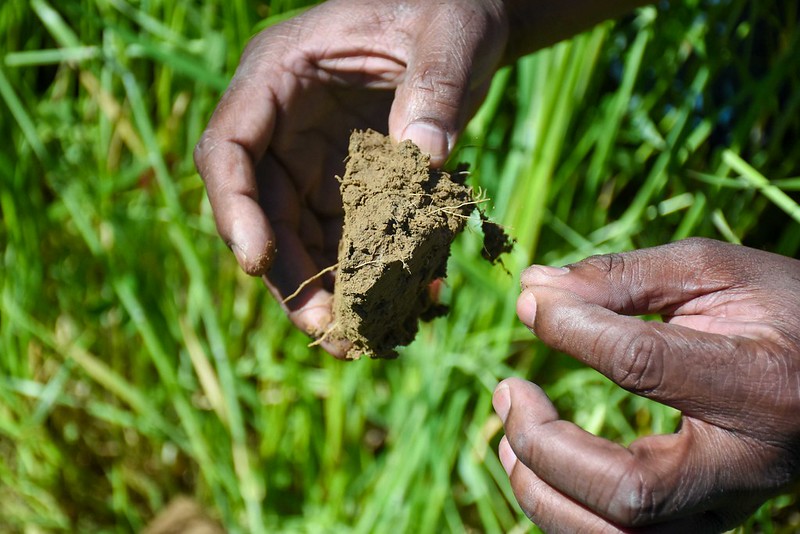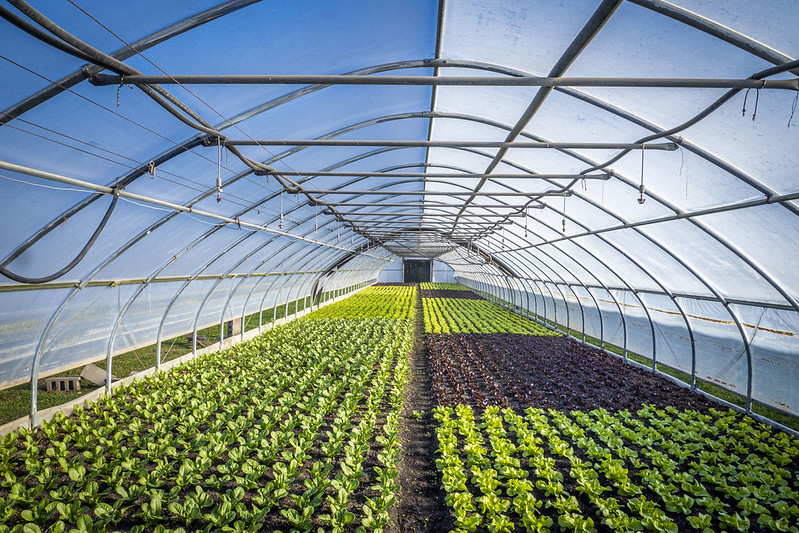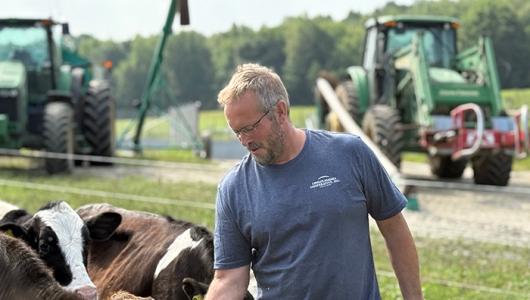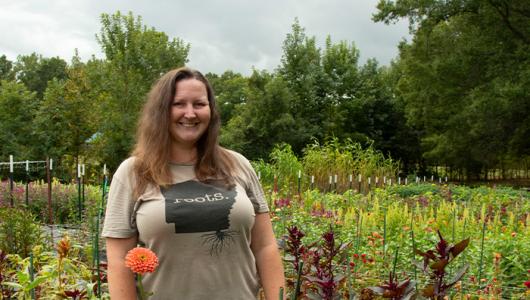We’re counting down to the holidays by highlighting the gifts given to us every day through conservation efforts. These gifts don’t come in packages wrapped in pretty paper with a shiny bow on top, but they do keep giving all year long. When we conserve our natural resources, these gifts can be re-gifted for generations to come. Follow #12GiftsOfConservation as we head into this holiday season and highlight how these gifts contribute to the things you value and rely on most.
Crops
Conservation secures our food supply by providing nutrient-rich soils to nourish the crops for livestock and foods we eat. Conservation practices, such as crop rotation, improve soil health and make the land more sustainable for future planting. Through crop rotation, crops are changed season by season in a planned sequence, providing benefits over the length of the rotation as well as food and cover for wildlife.
Organic Matter
Conservation is not only beneficial to producers’ financial heath, but also to soil health. Fields managed using no-till for multiple years generally hold water better than conventionally tilled fields. This is particularly valuable in drought-prone areas, where lack of water can lead to crop loss. No-till adoption also reduces soil erosion, increases soil biological activity, and increases soil organic matter.
Natural Resources
Landowners across the nation implement conservation practices to reduce pollutants to keep our water clean. USDA’s conservation programs give landowners the tools and resources to protect environmentally sensitive land and restore grasslands, wetlands, and forests, which leads to cleaner water and air, healthier soil, and enhanced wildlife habitat.

Soil
Healthy soil is the foundation of agriculture. Farmers across the nation see improvement to their soil’s physical and biological properties with cover crops. In addition to supplying nutrients, suppressing weeds, preventing erosion, and increasing water in the soil, cover crops can have an impact on a farmer’s bottom line. Healthy soils are also resilient after natural disasters. Whether drought or heavy rainfall, healthy soils can ensure that production continues and that nutrients stay on the land and not in our rivers and streams.
Energy
Technology, like variable frequency drives, helps farmers who irrigate use a smaller pump while controlling the frequency and voltage and allowing multiple systems to run off a single pump. This innovation decreases both energy and water use.
Recreation
Conservation also creates unique opportunities for recreation. From introducing plants that attract pollinators like butterflies and bees, to creating wildlife habitat for woodland creatures, conservation provides benefits to those who cherish the outdoors. Restored wetlands make great spaces for recreation. While providing habitat, they also filter the air and water, and clean and recharge our groundwater. In addition to sequestering carbon, they can also hold a lot of water, providing passive flood protection to nearby areas. Wetlands are also beautiful places for fishing, boating, and bird watching.
Vegetation
Plant diversity helps maintain a healthy ecosystem. Tree and shrub establishment provides wildlife habitat as well as shade for livestock. And let’s not forget about the benefit to honeybees and other pollinators. Forage and biomass planting helps create additional feed for livestock, creating a win-win for producers by decreasing feed costs and improving herd health while reducing erosion and protecting water quality.

Air
Conservation cleans and renews our air. USDA helps private landowners conserve our natural resources, which includes air resources. USDA’s practices, like a bedded pack system, can reduce odor issues and they also offer animal health and comfort and manure management during the winter. The pack is then composted after winter ends and the animals are back on pasture, which helps build soil fertility.
Practices like a waste transfer system help farmers efficiently apply manure to their land while at the same time protecting and improving soil and water quality. These systems reduce odor, something the neighbors appreciate, while giving farmers something to appreciate – increased soil moisture and yields.
Technology
Conservation is our best technology for removing carbon from the atmosphere. Did you know that by practicing responsible grazing land management, and implementing other conservation measures on your farm, producers assist in carbon sequestration (absorption of atmospheric carbon by soil and plants)? This leaves our planet better for generations to come.
Irrigation and Water Management
One of our most precious resources is water. USDA has an active role in irrigation water management, paired with systems like microirrigation and irrigation reservoirs to lessen the strain on water supplies and efficiently use our water resources.

Organic Agriculture
Organic farming is an ecologically-based system that relies on preventative practices for weed, insect and disease problems, uses nontoxic methods to manage problems if they arise, and improves the natural resources of the land, including soil and water quality. Farmers use innovative growing systems, such as high tunnels, to extend growing seasons providing healthy, fresh fruits and vegetables throughout the year.
Natural Protection
Overgrown forests pose a wildfire risk. Through forest stand improvement, trees are thinned out allowing forests to thrive and protect the public from the risk of fire. Conservation practices protect our landscapes while also providing valuable protection to our homes and communities from floods. This includes maintaining aging infrastructure including dams and levees. USDA works with local partners to safeguard those who depend upon these structures.
Landowners should contact their local USDA Service Center if interested in conservation programs. They can also learn more online at Farmers.gov and at the Conservation at Work video series.
Dana Rogge is a public affairs specialist with the Farm Production and Conservation Business Center.


